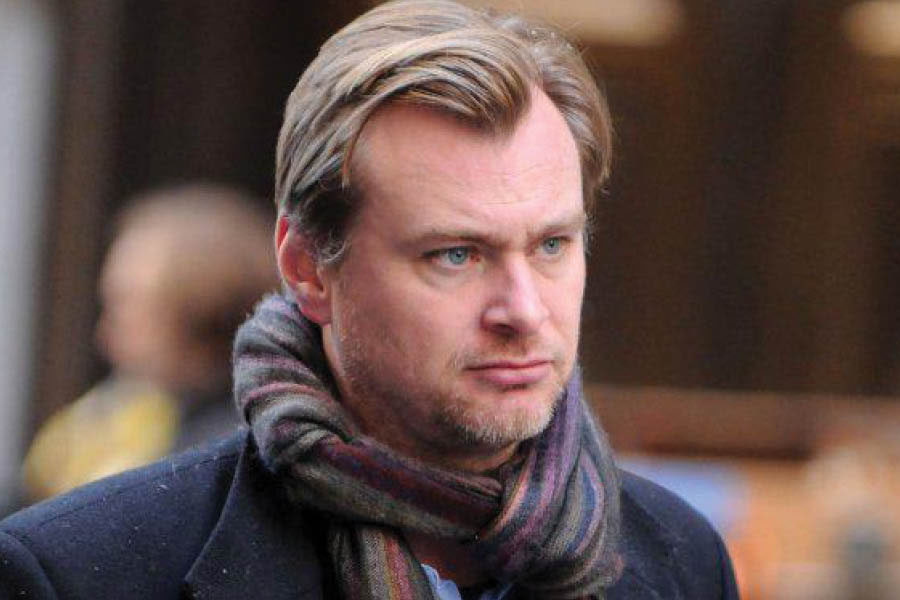Before Christopher Nolan became a celebrated director — before “Inception” penetrated the land of dreams, “Interstellar” played with the laws of physics and “Tenet” warped all sense of chronology — there was “Larceny.”
In 1995, Nolan directed “Larceny” with a group of friends he had met through the film society at University College London. It is about 8 minutes long, was shot in black and white with 16-mm cameras and involves an apartment burglary.
That is essentially all the public information about the film. After a screening at the Cambridge Film Festival in 1996, it vanished.
In the decades since, Nolan, 53, has become known for his expansive cinematography and mind-bending plots in movies such as “Memento,” the “Dark Knight” trilogy and “Dunkirk.” He is expected to win his first Oscar on Sunday for “Oppenheimer,” a three-hour biopic about a theoretical physicist that made nearly $1 billion.
The popularity of Nolan’s work has made the elusiveness of “Larceny” maddening for fans who want to watch his entire filmography, and perhaps gain insight into his early development as a filmmaker.
“When I meet God, I won’t ask about the scrolls from the Library of Alexandria, I’ll shake him down for this lost film,” Dan DeLaPorte wrote on Letterboxd, a website where people rate and review movies.
DeLaPorte said in an interview that he had scrolled through pages and pages of Google search results and combed through Reddit, Vimeo and underground media sites to try to find “Larceny.”
Nolan’s decision to keep “Larceny” private while publicizing “Doodlebug,” a 3-minute short from 1997, has fueled speculation among his fans. Is he planning to transform “Larceny” into a full-length feature? Embarrassed by his work as a young filmmaker? Nervous about some of its content?
“In English literature there’s this term, ‘juvenilia,’ which is great artists’ younger works when they were teenagers or apprentices,” said Matthew Tempest, who was secretary of the university’s film society when Nolan was its president. “Frustrating as it might be for fans, I think they have a right to destroy or withdraw it.”
In 2021, a fan tracked down a copy of another of Nolan’s early short films, “Tarantella” (1990), with the help of a Chicago public television station. After the film was posted on Vimeo, Nolan’s production company filed a copyright infringement claim to have it removed. Even so, the discovery renewed hope among Nolan fans.
Could “Larceny” be unearthed next?
A Training Exercise
In the 1990s, the film society at University College London met weekly in a cluttered theatre basement where strips of film hung from the ceiling. Nolan and the group’s other members, including Emma Thomas, his future wife, had access to cameras, tripods, dolly tracks and other film-making tools. He continued to use the equipment after graduating in 1993.
Student films provide opportunities for budding filmmakers to experiment with their craft and forge partnerships with actors and crew members, said Christopher Chan Roberson, who teaches cinematography at the Tisch School of the Arts at New York University.
“The idea of making a student film is a notion of process,” Roberson said. “It’s just a process of going, ‘OK, maybe I didn’t make the best film, but I really love working with this cinematographer and this is my cinematographer for life.’”
Jeremy Theobald, who played the occupant of the apartment in “Larceny,” also starred in Nolan’s debut feature, “Following,” about an aspiring writer who meets a professional burglar. David Julyan, who created the music for “Larceny,” later worked with Nolan on “Memento,” “Insomnia” and “The Prestige.”
Theobald told Darren Mooney, the author of “Christopher Nolan: A Critical Study of the Films,” that Nolan’s script for “Larceny” differed from the surreal film society scripts he had read.
“This was witty,” Theobald said. “It was funny, it was pithy and it was dark. It had a great twist at the end.”
“Larceny” was shot over one weekend at Nolan’s apartment, Julyan said, and features percussion loops, electric piano and bass guitar from a synthesizer Julyan had borrowed.
In an interview with Vice published in 2014, Nolan recalled treating “Larceny” and “Doodlebug” as opportunities to experiment with filmmaking techniques before applying those skills to “Following.”
“Can you create a very stripped-down, very tight production machine that would then be applied to making a feature film?” Nolan said. He added, “When we came to do ‘Following,’ we were sort of shooting a short film every weekend. So it would be a 2-minute, 3-minute chunk of the film done every weekend.”
‘A Very Controlled Artist’
“Tarantella” lives on in the recesses of the internet, and “Doodlebug” is included on the Criterion edition of “Following.” But very few people have seen “Larceny,” and that seems unlikely to change.
Directors sometimes avoid releasing their early work out of concern that it could reflect poorly on them, Roberson said.
“I think Chris Nolan doesn’t want to make himself vulnerable,” Roberson said, adding, “Why share incomplete stuff you’re not proud of, versus ‘Oppenheimer’?”
In Mooney’s book, Theobald said: “I think Chris thought it was too similar to ‘Following,’ that people would think that it was a test bed for ‘Following.’”
A spokesperson for Nolan declined to comment.
“Chris is a very controlled artist, a controlled filmmaker,” said Nigel Karikari, the assistant director of “Larceny,” recalling how Nolan would use a camcorder to take rehearsal shots before filming. “Him not wanting to release that is just another extension of that.”
For DeLaPorte, there is a silver lining to the mysterious, unwatchable nature of “Larceny.”
“There’s lore with it now,” he said. “It’s almost bigger than it would have been if it was available. There’s this unattainable thing that just keeps the hunt going.”
The New York Times News Service











